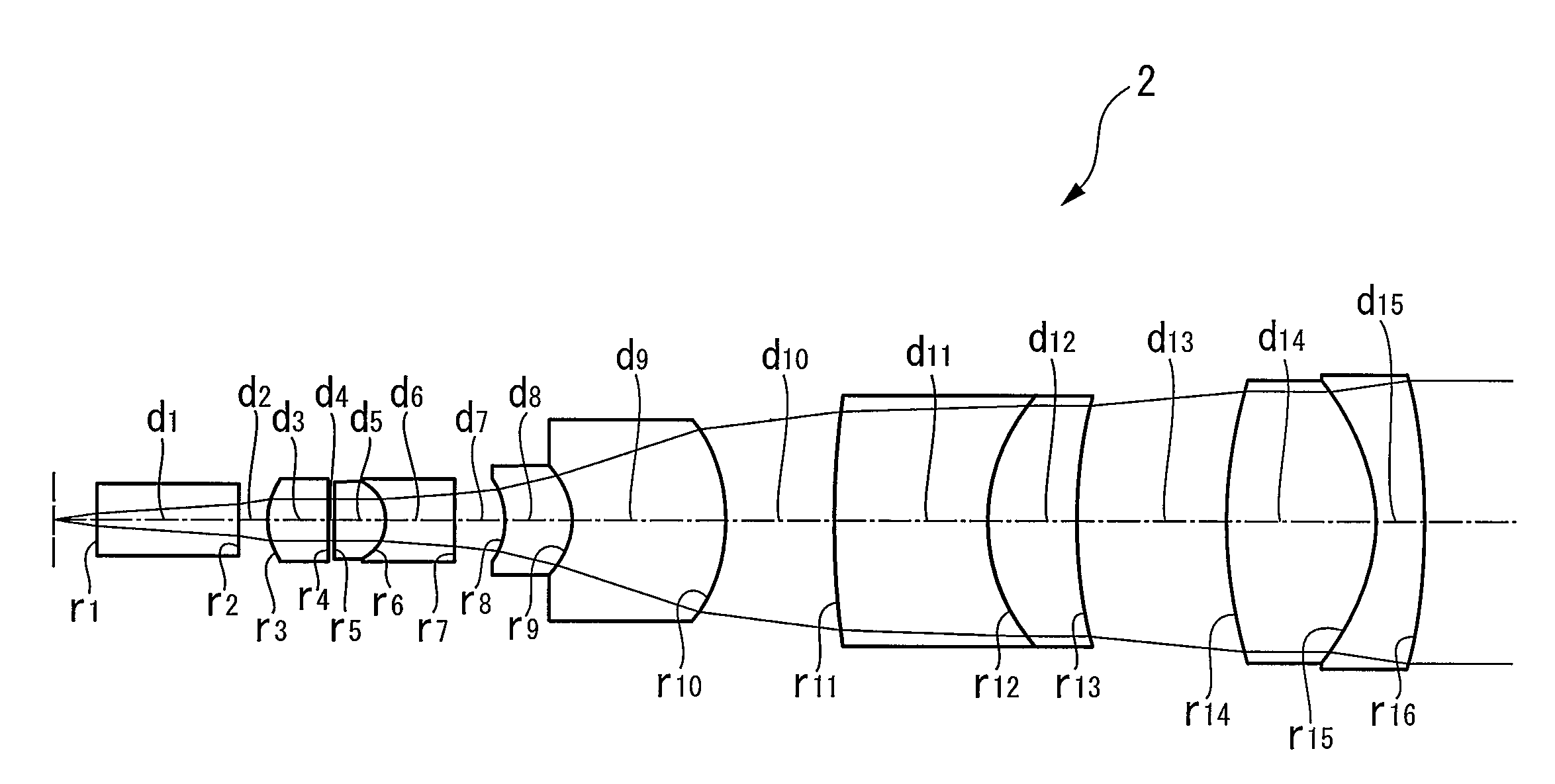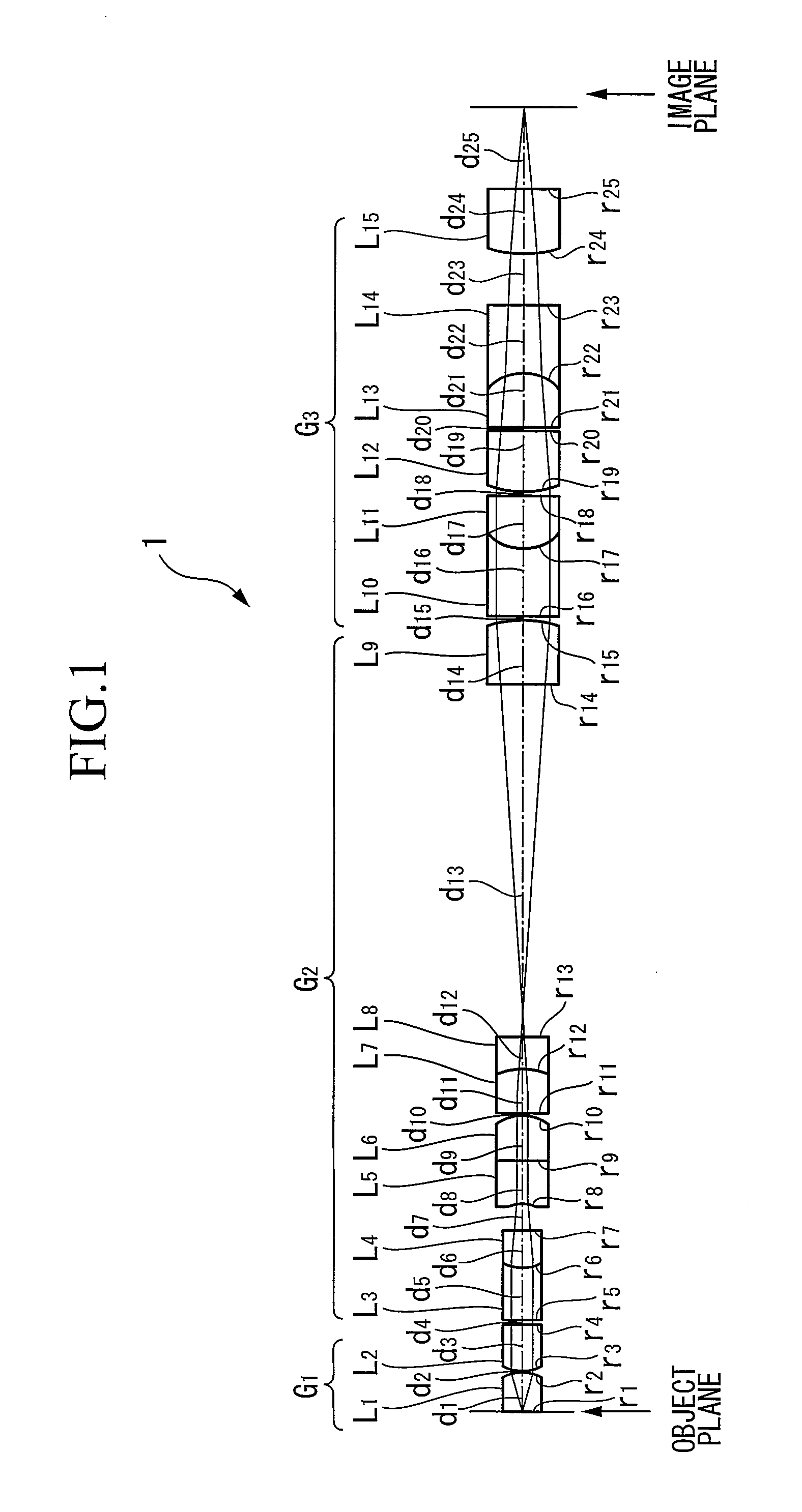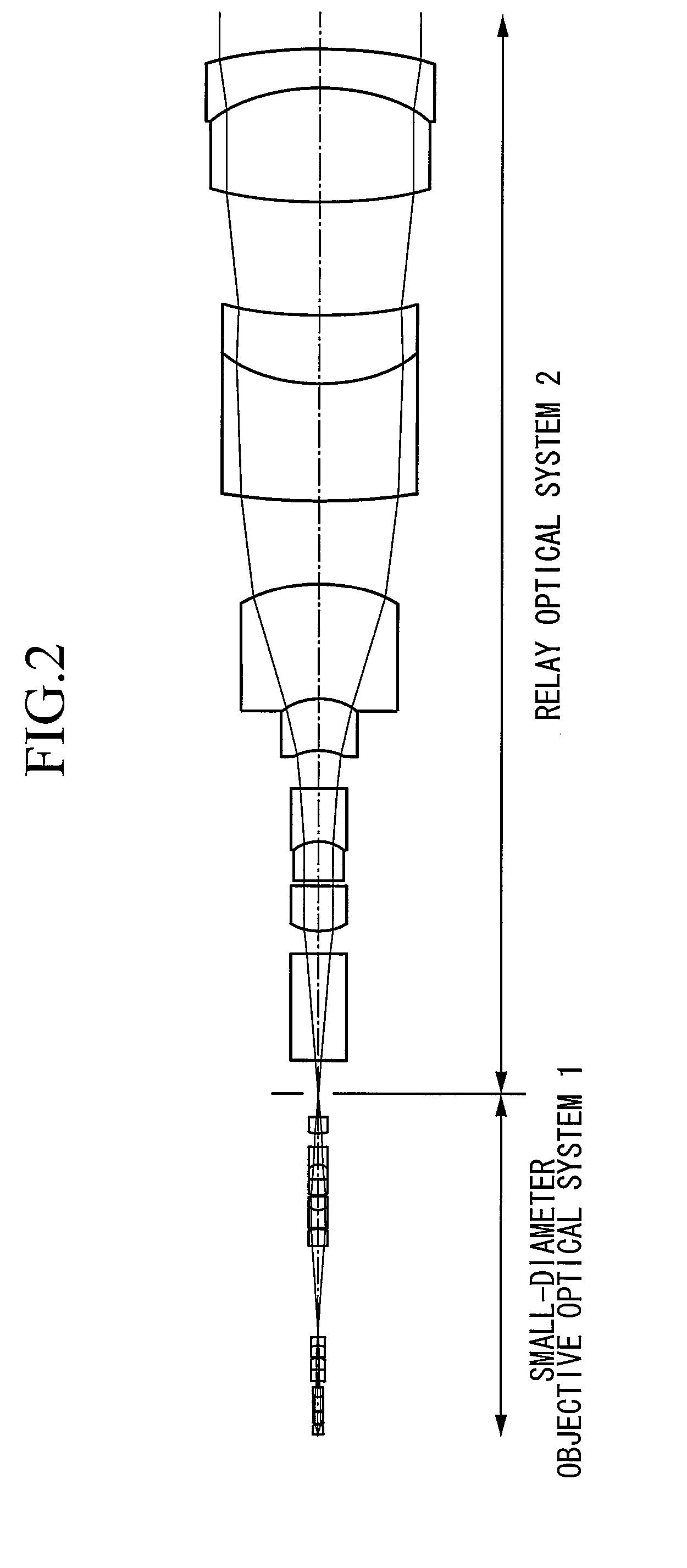Small-diameter objective optical system
a small-diameter, optical system technology, applied in the field of objective optical systems, can solve the problems of inability to observe, high degree of invasiveness, and significant damage to small laboratory animals, and achieve the effect of minimalism of invasiveness
- Summary
- Abstract
- Description
- Claims
- Application Information
AI Technical Summary
Benefits of technology
Problems solved by technology
Method used
Image
Examples
example 1
[0072]Example 1 of the present invention will now be described using the small-diameter objective optical system shown in FIG. 1. Table 3 is the lens data for the small-diameter objective optical system in FIG. 1. FIGS. 5A to 5D are aberration curves for the small-diameter objective optical system in FIG. 1. In FIGS. 5A to 5D, reference symbol NA indicates the numerical aperture at the object plane, and reference symbol Y indicates the object height.
[0073]
TABLE 3rdndνdOBJECT PLANE∞0.021.3330455.79(working distance)(water) 1∞0.441.88340.76 2−0.40170.01 3 0.53460.551.88340.76 4∞0.03 5∞0.611.4874970.23 6 0.47860.441.88340.76 7∞0.3 8−0.49330.51.75552.32 9∞0.511.4874970.2310−0.55910.0211∞0.531.75552.3212−0.90210.361.4874970.2313∞4.0914∞0.751.4874970.2315−1.42120.0316∞0.781.88340.7617 0.56250.631.75552.3218∞0.0319 1.00760.711.4874970.2320∞0.0321∞0.631.75552.3222−0.55980.781.88340.7623∞0.5924 1.42670.751.4874970.2325∞0.92
[0074]The lens diameters of L1 to L4 are 0.46 mm, the lens diame...
example 2
[0076]FIG. 6 is a lens diagram of Example 2 of the small-diameter objective lens according to the present invention. The small-diameter objective lens 10 according to Example 2 has a longer working distance WD than that of Example 1. Accordingly, it is possible to perform observation without contacting the tip of the lens with the observation target, so as not to physically affect the living organism.
[0077]Table 4 shows the lens data for the small-diameter objective optical system in FIG. 6. FIGS. 7A to 7D show aberration curves for the small-diameter objective optical system in FIG. 6. The reference symbols in FIGS. 6, 7A to 7D and Table 4 are the same as those in Example 1.
[0078]
TABLE 4rdndνdOBJECT PLANE∞0.051.3330455.79(working distance)(water) 1∞0.41.88340.76 2−0.38210.01 30.5340.61.88340.76 4∞0.04 5∞0.611.4874970.23 60.9980.61.88340.76 7∞0.1 8−0.47610.511.4874970.23 9∞0.51.75552.3210−1.19930.02110.70120.511.4874970.2312∞0.51.75552.3213−0.72570.0514−0.47610.451.88340.7615∞2.5161...
PUM
 Login to View More
Login to View More Abstract
Description
Claims
Application Information
 Login to View More
Login to View More - R&D
- Intellectual Property
- Life Sciences
- Materials
- Tech Scout
- Unparalleled Data Quality
- Higher Quality Content
- 60% Fewer Hallucinations
Browse by: Latest US Patents, China's latest patents, Technical Efficacy Thesaurus, Application Domain, Technology Topic, Popular Technical Reports.
© 2025 PatSnap. All rights reserved.Legal|Privacy policy|Modern Slavery Act Transparency Statement|Sitemap|About US| Contact US: help@patsnap.com



